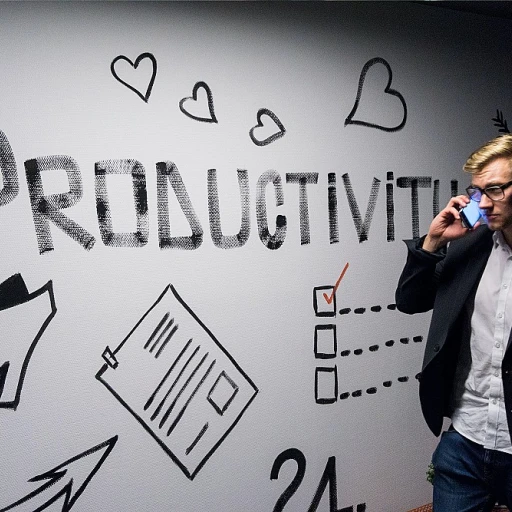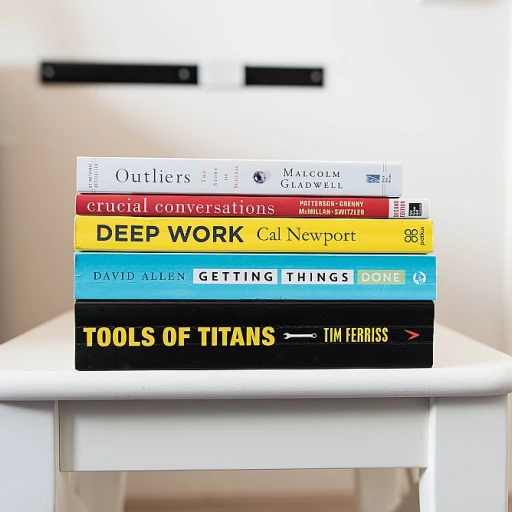
Understanding the Role of Feedback in Onboarding
The Significance of Feedback in Onboarding
Understanding the role feedback plays in onboarding is imperative for creating a seamless transition for new hires. Feedback is not just a one-time activity; it forms the backbone of professional development and enhances team dynamics. As new members join the workforce, the presence of effective feedback serves to guide, clarify, and empower them.
Feedback activities, including providing constructive feedback and receiving feedback, are central to the professional growth of new team members. Numerous feedback exercises can be designed to offer clarity to new hires about their strengths and areas for improvement. While giving feedback involves clear communication, receiving it necessitates an openness and willingness to embrace guidance.
A well-structured feedback mechanism allows participants to engage in meaningful interactions where giving and receiving feedback becomes part of the work culture. Such feedback roles can be integrated into daily team activities, ensuring that every person involved is clear on the expectations and growth trajectories. Even a few minutes of dedicated feedback can significantly influence how new hires adapt and thrive in a new environment.
Integrating feedback within onboarding establishes a platform for new hires that fosters a fun and engaging learning experience. In a feedback-friendly team, time devoted to activities such as feedback cards or workshops can be both enlightening and enjoyable, as they facilitate team members to exchange insights and partake in group problem solving.
Meeting the demands of today's collaborative work environments requires that feedback be both constructive and timely, contributing to a shared goal of success. For further insights on enhancing onboarding with effective feedback tools, consider exploring relevant feedback tools designed to maximize onboarding success.
Creating a Feedback-Friendly Environment
Fostering an Open Feedback Culture
In the process of ensuring a successful onboarding experience, creating a feedback-friendly environment is pivotal. This environment acts as a foundation where feedback plays multiple roles—encouraging growth, identifying strengths and areas for improvement, and enhancing professional development. Encouraging an open culture begins with making feedback activities an integral part of the team dynamics. Team members should feel that giving and receiving feedback is a natural part of their work routine. One effective method is organizing feedback workshops. Here, participants can engage in feedback exercises, using materials such as cards for open discussions. These activities can be designed to be fun, allowing the group to bond while still addressing critical areas for improvement. To be successful, it’s crucial that team members have clear expectations of the feedback process. Establish guidelines that detail how feedback should be delivered and received. This clarity paves the way for more effective feedback exchanges. Each participant should have a clear understanding of the importance of feedback, both given and received, within the team’s professional development framework. Bring the team together for regular feedback sessions, where everyone is allowed minutes to express thoughts and provide constructive feedback. This not only fosters transparency but also encourages a culture where team members feel valued. Organizational support plays a critical role in maintaining this culture. Providing regular training on feedback techniques ensures everyone is equipped to both offer and accept feedback constructively. This approach not only improves individual experiences but aligns with the broader goal of improving the onboarding process as a whole. For a comprehensive understanding of how to enhance your onboarding process through feedback, consider checking out this journey through feedback.Effective Techniques for Giving Feedback
Approaches to Delivering Constructive Feedback
Delivering feedback is an art that requires delicacy, especially during the onboarding process. Feedback plays a crucial role in providing new team members with insights into their strengths and areas for improvement. Here, we'll explore techniques to ensure feedback is both clear and constructive.
Whether you're managing a group or working with a single person, feedback should be aimed at professional development. Preparation is key. Begin by either developing materials beforehand or familiarizing yourself with the person's duties and responsibilities. Here are some practices to keep in mind:
- Clarity is Key: Ensure that feedback is concise and clear. Use straightforward language to articulate specific strengths or areas improvement, avoiding vague comments.
- Time It Right: Allow minutes for the person to absorb what is being shared. Overloading them with feedback may overwhelm, leading to undesired outcomes.
- Highlight Strengths: Start with positives to create a receptive environment. Knowing their strong points boosts confidence and encourages openness to areas for growth.
- Constructive and Balanced: Discuss both positive aspects and areas where enhancements can be made. Emphasize constructive solutions or alternatives where possible.
- Encourage Problem Solving: Involve them in identifying solutions or improvements. This activity fosters engagement and makes feedback received an interactive process.
Feedback exercises can also be conducted using feedback cards in a workshop setting. This group activity allows for fun feedback sessions that engage multiple participants and facilitate peer learning among team members.
Effective feedback is not just about giving feedback but also about evolving into a more cohesive and supportive team. When done right, it can significantly enhance the onboarding experience, empowering new hires to integrate seamlessly into the organization. For more on enhancing employee integration, explore our insights on effective induction slides.
Receiving Feedback: A Guide for New Hires
Embracing Constructive Criticism for Growth
In the onboarding process, the reception of feedback is as crucial as its delivery. For new hires, the opportunity to embrace constructive criticism can significantly enhance their integration and performance. Receiving feedback allows them to grow, identify strengths, areas for improvement, and develop professional skills that benefit the entire team.
When you're new at a company, it can feel intimidating to receive feedback. Being prepared and open to this process is vital. New team members should be encouraged to see feedback activities as constructive guidance rather than criticism. This mindset shift helps in fostering a positive environment where everyone can thrive.
Crafting a Positive Feedback Experience
The key to effective feedback is clarity and relevance. It's important for everyone involved to engage in feedback exercises with a willingness to learn and improve. Here are some strategies to help new hires become adept at receiving feedback:
- Allocate Minutes for Reflection: Encourage new employees to take a few minutes after feedback is received to reflect on the discussion. This reflection time allows them to process the advice, improving understanding and implementation.
- Engage in Feedback Workshops: Participating in specific feedback exercises or workshops within the team can be a helpful way to practice receiving feedback in a supportive environment. Fun feedback activities can even make this learning process engaging.
- Maintain an Open Dialogue: Encourage an ongoing conversation about feedback rather than viewing it as a one-time activity. This continuous communication strengthens the new hire's ability to adapt and grow.
- Identify Patterns Over Time: By paying attention to recurring themes in the feedback, new hires can focus on continuous improvement in specific areas. This targeted approach helps in long-term professional development.
Integrating these strategies within the onboarding framework plays a crucial role in making the feedback process a productive and positive experience for all team members involved.
Common Challenges in Feedback Exchange
Overcoming Feedback Exchange Obstacles
Navigating the common challenges in feedback exchange during onboarding is crucial for both the new hire and the existing team. These hurdles can impact the flow of constructive communication, which directly affects the person's integration into the team and their professional development. One central issue is the hesitation to provide feedback. Team members may feel uneasy about sharing their thoughts, fearing that it might be perceived as criticism rather than a constructive reflection of areas for improvement. Encouraging an open dialogue where all participants feel safe to express their insights can foster a more welcoming environment. This will allow team members to share feedback in a way that is both clear and effective. Determining the appropriate time for giving and receiving feedback is another common challenge. The onboarding period is often hectic, with little time to sit down for detailed discussions. It's essential to schedule specific minutes dedicated to feedback activities and exercises, ensuring this crucial element doesn't get lost amidst other work priorities. Moreover, the interpretation of feedback plays a vital role. If the feedback received by a new hire is unclear or overly critical, it could lead to confusion or demotivation. Team members should focus on providing constructive feedback—highlighting strengths, identifying areas for improvement, and suggesting practical problem-solving approaches. Such an approach not only benefits the individual but enhances the group's overall dynamic. Feedback activities can be structured into more engaging formats, like workshops or group activities, which can make the feedback process less daunting and even fun. For instance, using feedback cards during a team workshop can offer an interactive way for people to share and receive insights, transforming the act of feedback into a collaborative activity. Addressing these challenges requires deliberate effort and thoughtful techniques. For organizations looking to enhance their onboarding feedback, understanding these difficulties and implementing solutions can vastly improve the experience for all team members involved.Measuring the Impact of Feedback on Onboarding Success
Evaluating the Effectiveness of Feedback for Onboarding Success
Measuring the impact of feedback on onboarding success is a critical step for organizations aiming to hone their employee integration process. Incorporating feedback into the onboarding process not only supports new hires in understanding their roles but also plays a crucial part in aligning them with team objectives. Here's how companies can gauge the effectiveness of feedback in onboarding:- Feedback Activities and Exercises: Implement structured feedback activities within the onboarding program to facilitate a fun and engaging way for new team members to receive feedback. Activities such as feedback cards can help in pinpointing strengths and areas of improvement.
- Monitoring Progress Over Time: Allocate regular check-in minutes to assess how new hires are benefiting from the feedback provided. This can also include setting clear milestones for objectives that were initially communicated during the onboarding phase.
- Surveying Feedback Recipients: Encourage participants to voice their opinions on the feedback received during the onboarding. This provides a direct insight into whether the feedback was viewed as constructive and helpful, aiding in continued professional development.
- Using Feedback Metrics: Develop metrics to track the progress and integration of new hires as a result of feedback. Employing key performance indicators related to job performance and engagement levels can give a quantitative outlook on the onboarding's success, influenced by giving and receiving feedback.
- Team Feedback Sessions: Organize group workshops to share both individual and collective feedback from team members. This not only enriches the feedback role by providing a holistic view but also nurtures problem-solving skills within the team.












